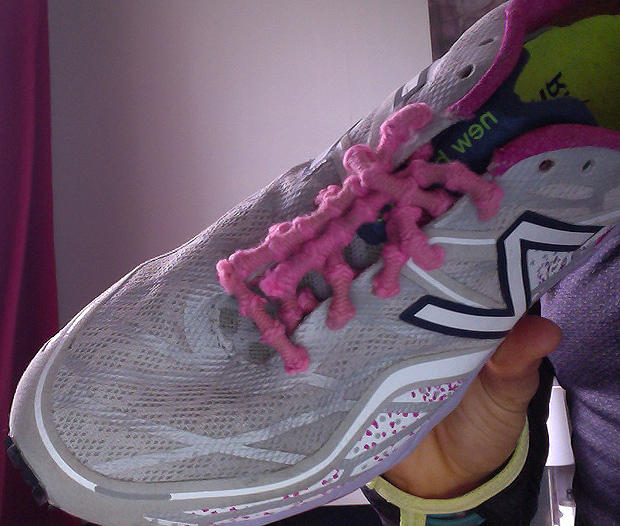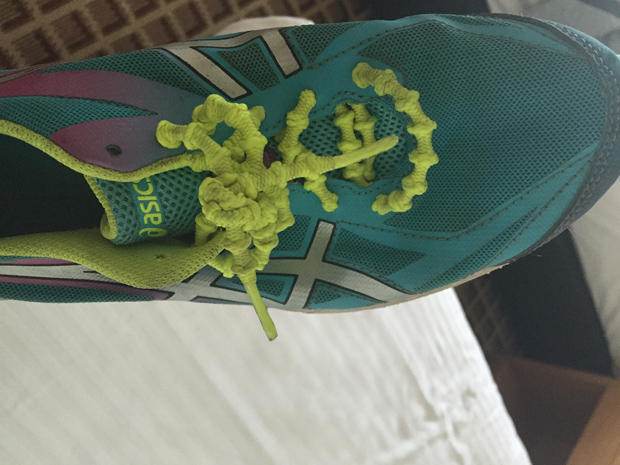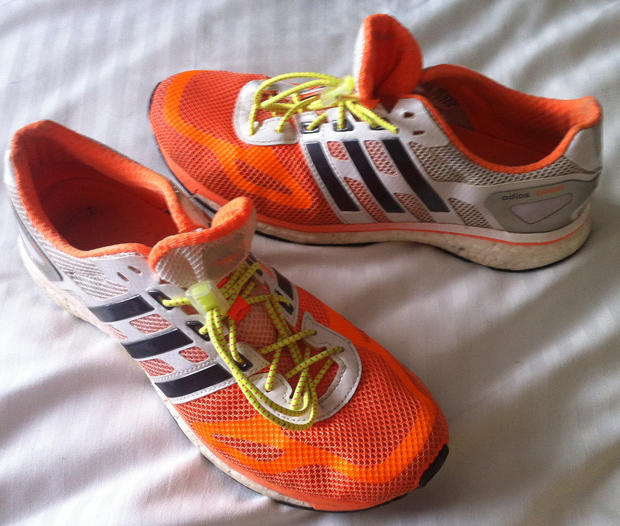
1 of 7 photos
<
>
No self-respecting pure runner spends 5 seconds putting on his or her racing flats, yet ITU racers are forced to do it in less time than that. What amazes me is that they then run mid-29s or mid-32s, male and female, in their hastily donned footwear. Top Ironman racers are not much slower in transition.
I asked top ITU coach Jamie Turner (Gwen Jorgensen among others) what his racers use. I expected them all to be in the same lacing system, but, no. Here are a number of his athletes' shoes and systems.
I asked top ITU coach Jamie Turner (Gwen Jorgensen among others) what his racers use. I expected them all to be in the same lacing system, but, no. Here are a number of his athletes' shoes and systems.

2 of 7 photos
<
>
Below are Aaron Royle's new lacing system he's trying out. These are from Asics, and these replace the Xtenex laces he was using. For him, and a number of others, the Xtenex knots in the laces bother him. Xtenex seems to be a very popular lace of choice because it allows the user to custom design shoe tightness up and down the shoe through deciding how many knots span the distance between holes on either side of the eyestay. But if the knots bother you, no can do.

3 of 7 photos
<
>
Below are the shoes of Amelie Kretz. Again, Xtenex.

4 of 7 photos
<
>
Estibaliz Cabañes is another example of laces from Asics. Is the Asics lace different from the typical elastic laces with lock downs? I can't see the difference. You can find them from 2XU, Profile Design, Orca (Sebastian Kienle used Orca's in his win last year in Kona), and from others.

5 of 7 photos
<
>
Below, Jake Birtwhistle is again using the laces from Asics.

6 of 7 photos
<
>
Sarah-Anne Brault's shoes below have, as you see, Xtenex laces.

7 of 7 photos
<
>
Tyler Mislawchuk is obviously wearing New Balance RevLites, but his laces are from another footwear company, Karrimore. They seem to be standard elastic laces with closures.
PREV
NEXT
1 of 7 photos







>
<


